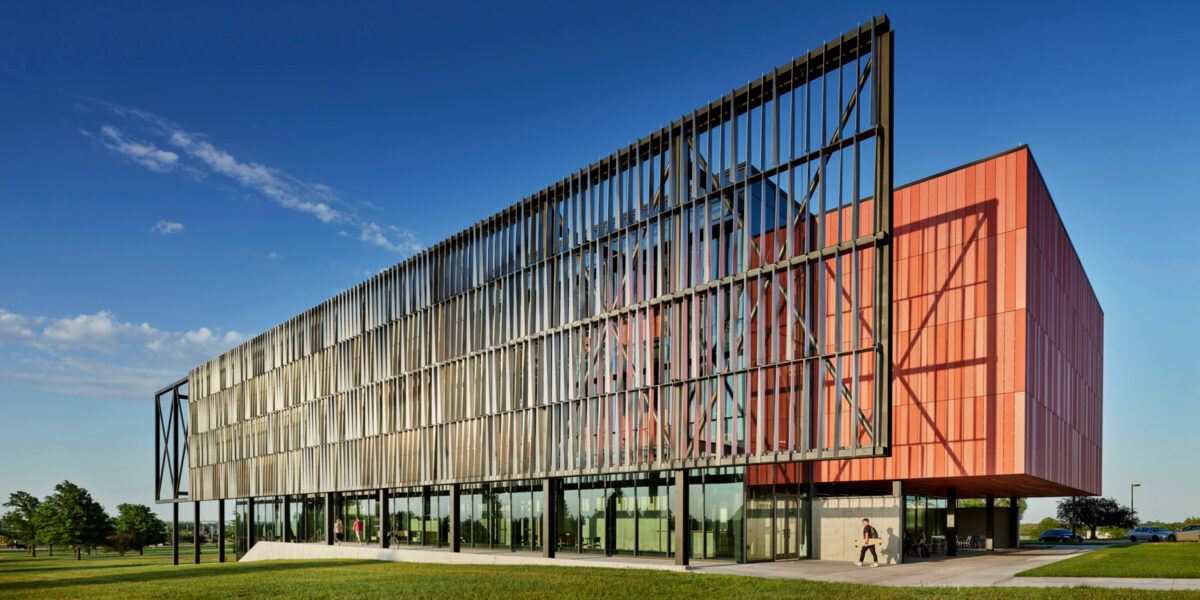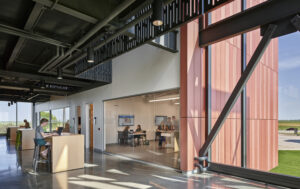Mark Bacon Awarded 2021 AIA Young Architects Award
The AIA Young Architects Award honors individuals who have demonstrated exceptional leadership and made significant contributions to the architecture profession early in their careers. This…

The Academic Excellence Center for Southeast Community College in Nebraska solves one of the most paradoxical challenges facing many community colleges: creating a broader community among a nontraditional, commuter-based population. Focused on introducing equitable opportunities for study and connectivity to the rural context that drives the college’s STEM programs, the center is a differentiator that accelerates the value proposition for today’s learners.
The center is the first new facility built through a revitalization plan for the college’s Beatrice campus, south of the state’s capitol. The project is a cornerstone for an anticipated transformation of the campus, which has a student population of just over 1,000. Across its 51,700 square feet, the center supports a wide range of STEM disciplines, from physics and health sciences to music and fine arts. Its construction sets a new bar for campus development and highlights critical programming through its cutting-edge learning environments, offices, and public space.

Envisioned by the team and college leaders as a machine for learning, the new center’s orientation, form, and fenestration optimize daylight in all learning spaces. Its primary classrooms leverage indirect daylight from adjacent open collaboration and circulation. The balance of direct and indirect daylight is further distributed along a primary circulation spine to create a dynamic experience that supports impromptu social connectivity. The team’s strategies offset most artificial lighting needs while simultaneously enhancing the learning experience and bolstering connections to the surrounding community.
Though the college did not articulate specific energy conservation goals, the team employed a purposeful approach to sustainability that nurtures user well-being and comfort while ensuring the facility’s longevity and a return on investment that correlates to the college’s overarching business plan. It meets the Architecture 2030 Challenge through a 70% energy reduction and a photovoltaic-ready infrastructure that will help move the college to a net zero master plan.

A vital gateway to the campus, the center is both a destination and landmark for the college community. It is an aesthetically contemporary solution that responds to both program and considerations while still celebrating the unpretentious rural vernacular of Nebraska.
Learn more.